Basil Beattie
Drawings
8 - 26 August 2006
Basil Beattie is a highly respected British painter, having exhibited in London and Europe since 1958. Over the last few decades his large and inventive abstracts have increasingly adopted a system of pictographic signs; doorways, stairways, archways, ziggurats, corners and long tunnels. Beattie sees these more as psychological states, rather than an illustrative or figurative association. However these architectural and archetypal forms comprehensively define the interior of the paintings, forming cells of space, depth, light and air.
Reluctant to define his references, Beattie describes the empty spaces in his paintings as a “place to breath” and the symbolic motifs as ambiguous. From the traditions of abstract painting, he has made an almost unwilling leap from the gestural into language. But this is both a complex and sensual notation. Rich earth colours dominate the palette and the surface is painterly. The paint, applied quickly and fearlessly, is sometimes removed with the hand.
The drawings, first seen in a London gallery in a 1991 installation of 350 works, are important in establishing his vocabulary and are equally charged with this symbolism. Made with Chinese ink, they are flooded with water and worked with a screwdriver. Stacks of blocks topple over, wall-like surfaces find odd angles to the perpendicular, and stairways leading nowhere suggest a new order of architecture.
Large groups of these drawings have been exhibited, with much acclaim, in London, in ‘Thinking Aloud’ at the Camden Arts Centre, and in ‘Drawing on the Interior’ at the Eagle Gallery.
Beattie’s work spans a 50-year period and he has influenced a generation of young British artists through his years of teaching painting at Goldsmith College, London in the ’80s and ’90s. He is represented in many major collections in the United Kingdom, including the Saatchi Collection and the Tate Gallery. An exhibition of his paintings was held at Tate Britain from February to May, 2007.
Two Rooms presents 72 drawings by Basil Beattie in the long room as part of the inaugural exhibition.
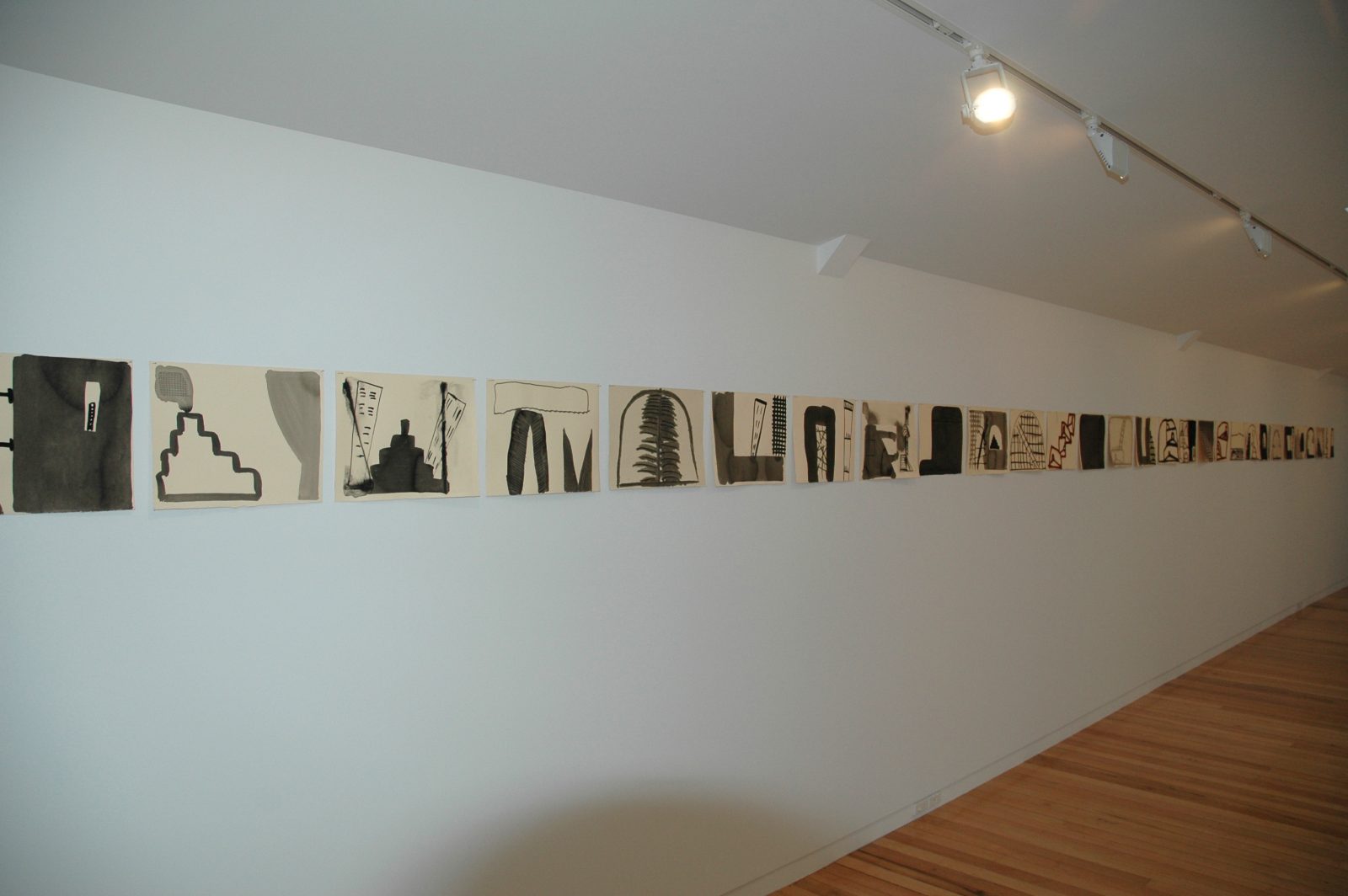
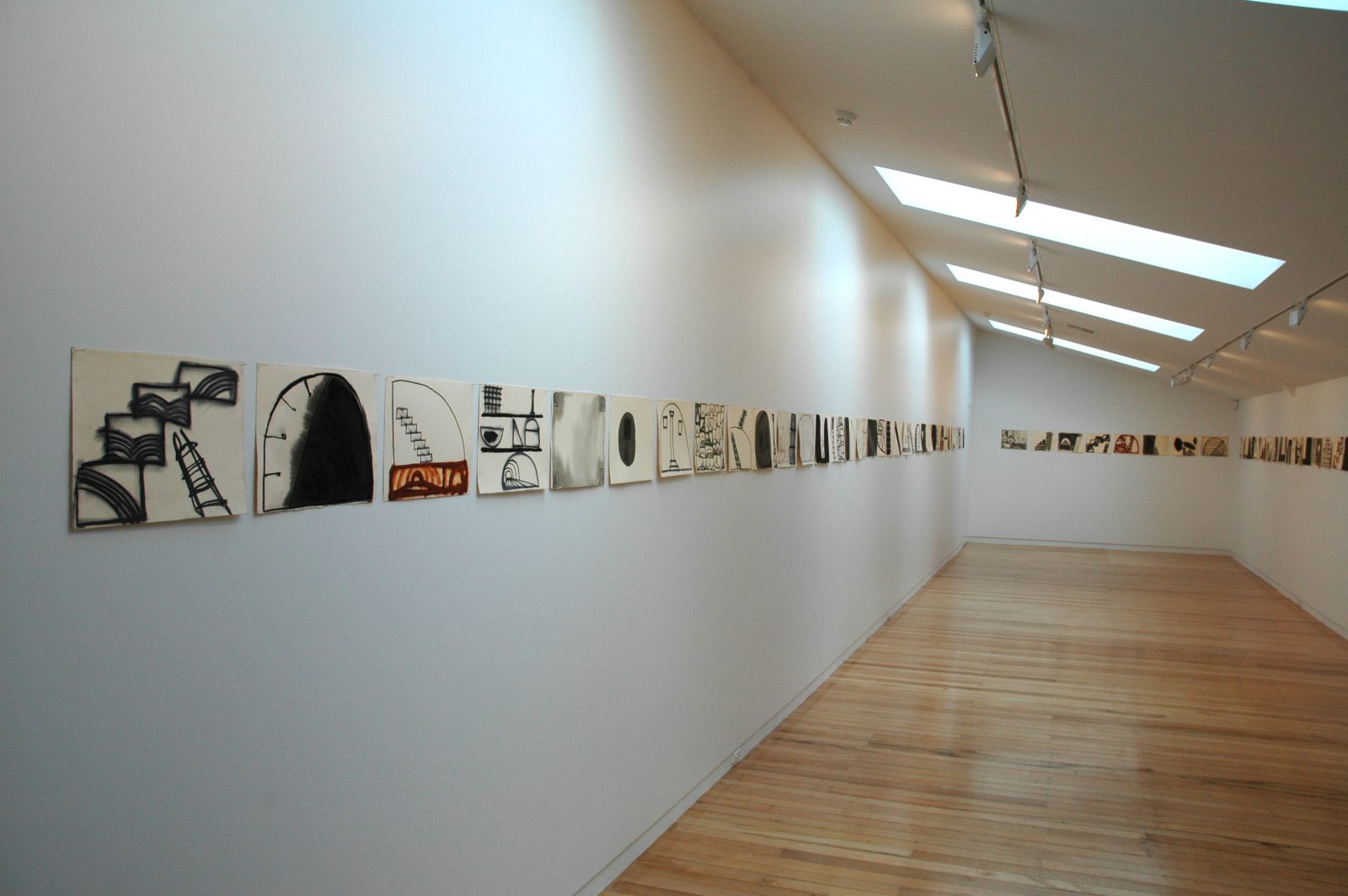
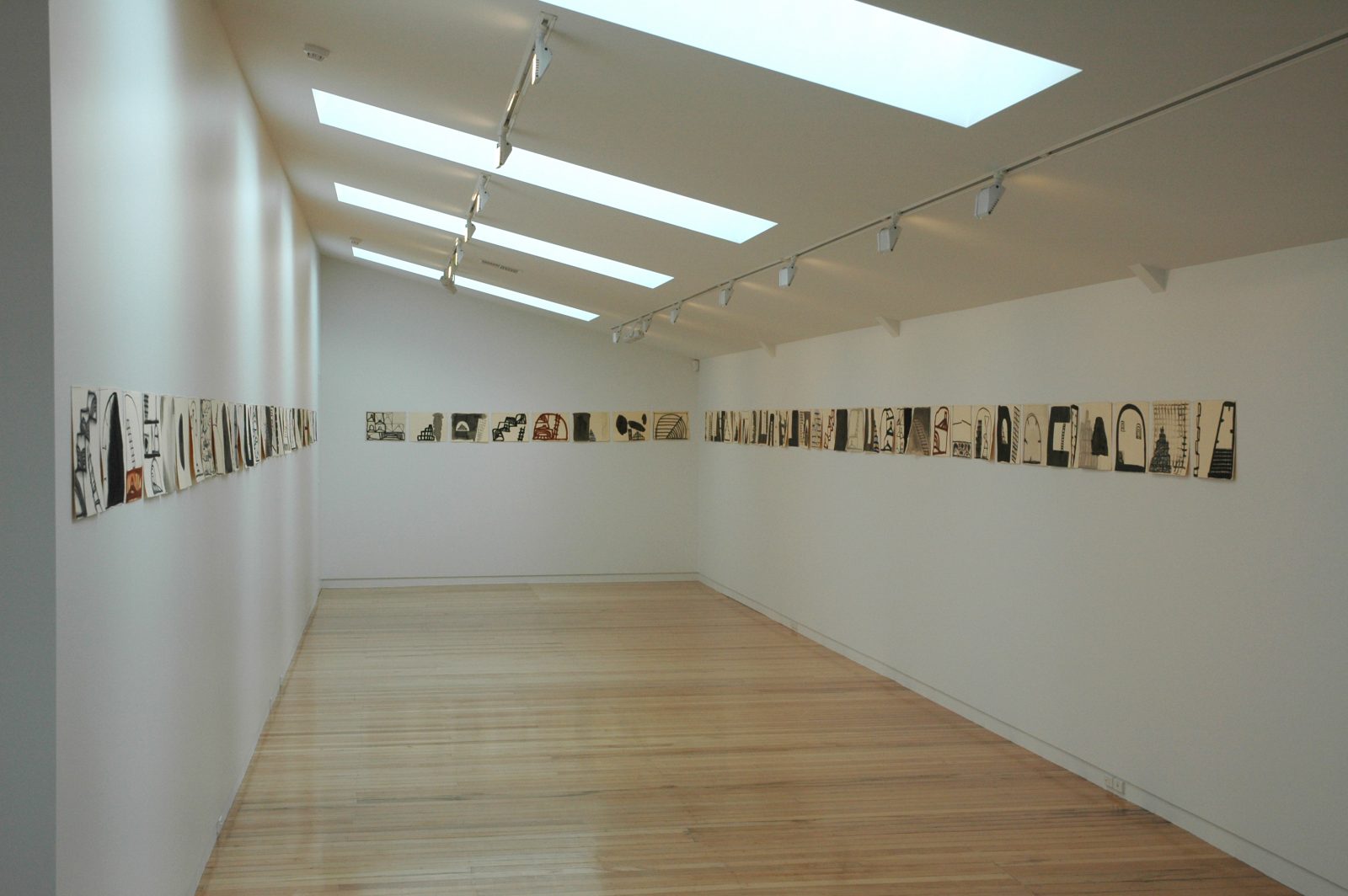
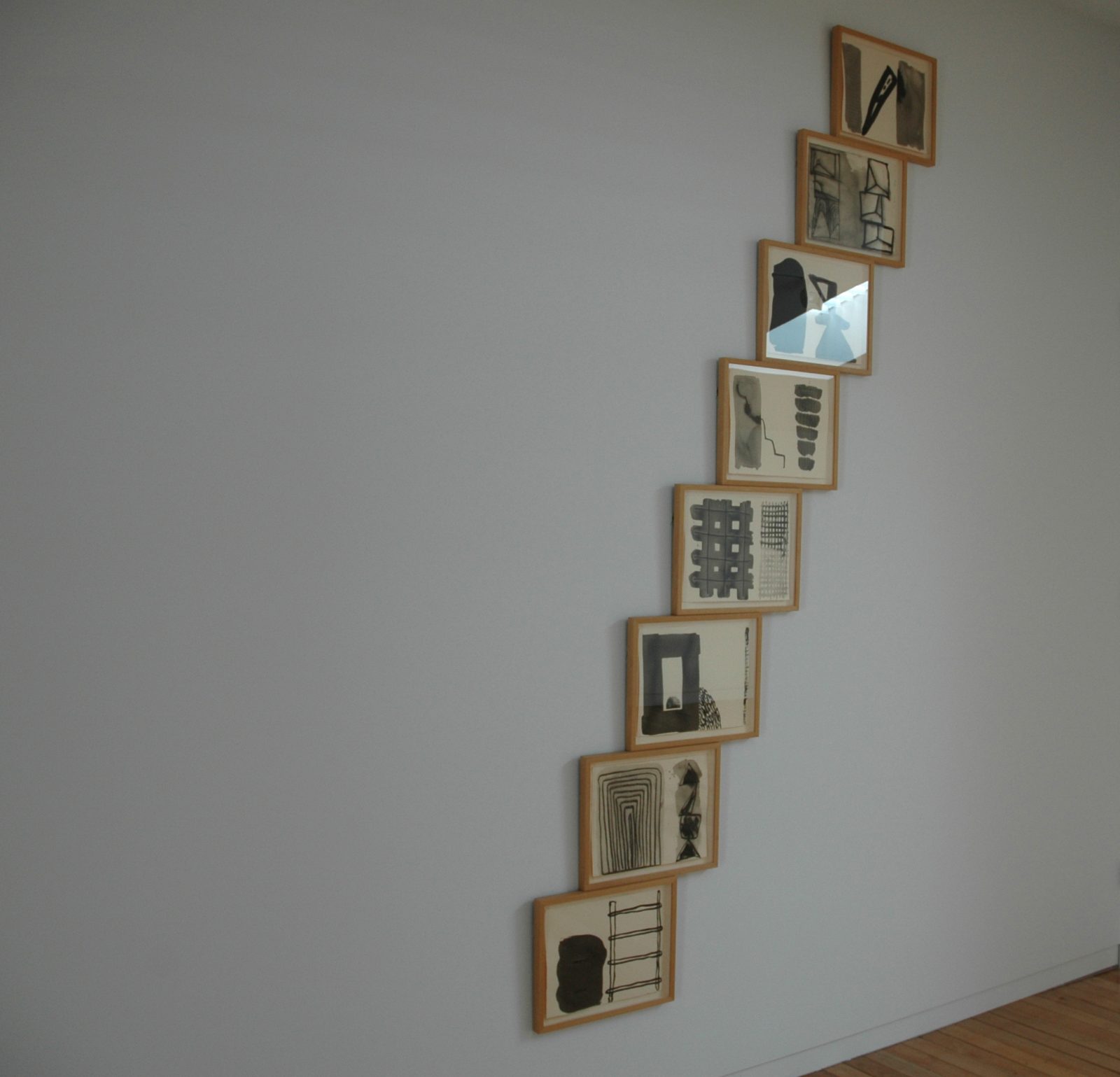
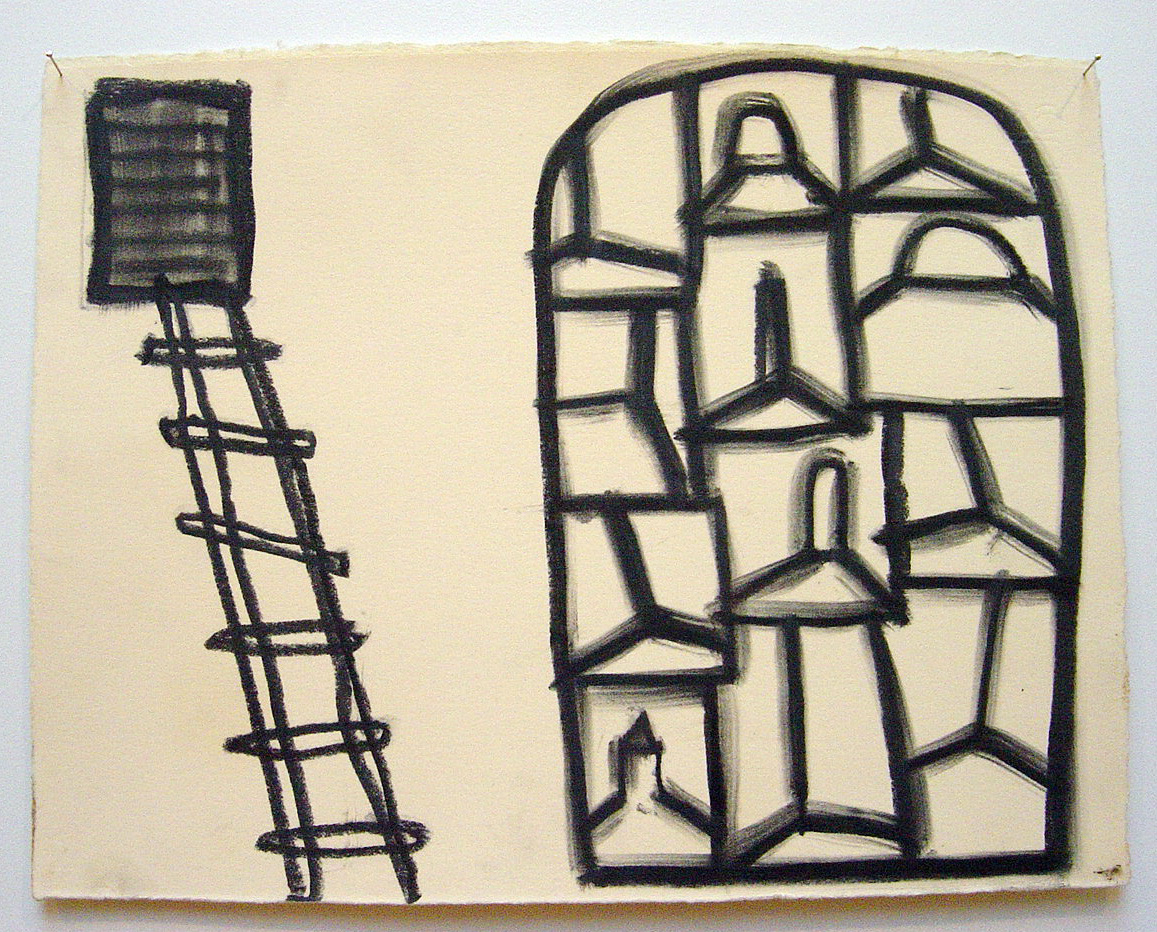
Chinese Ink on Paper
280 x 360mm
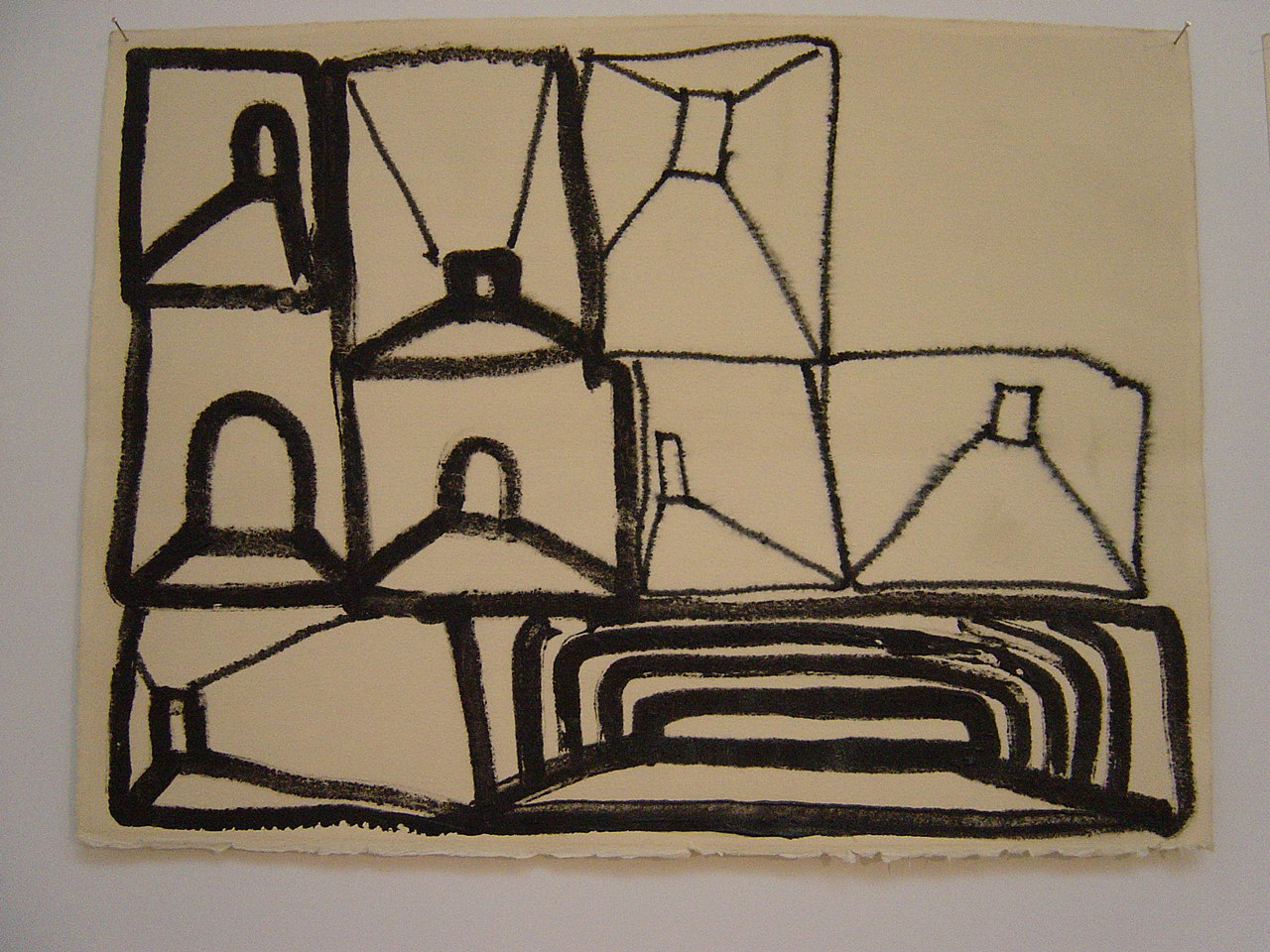
Chinese Ink on Paper
280 x 360mm